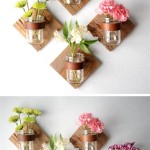Pooja Room Decoration Ideas: Creating a Sacred and Serene Space
The pooja room, often referred to as the prayer room or shrine, holds a significant place in many homes, serving as a dedicated space for spiritual practices, meditation, and connecting with the divine. Decorating this space thoughtfully is crucial, as aesthetics can greatly influence the ambiance and facilitate a more conducive environment for prayer and contemplation. This article explores various pooja room decoration ideas, focusing on elements that contribute to a serene, sacred, and visually appealing space.
Careful consideration should be given to several factors when planning the decoration of a pooja room. The size of the room, the overall style of the home, and personal preferences all play a role in determining the most suitable design elements. Furthermore, adhering to certain principles of Vastu Shastra or Feng Shui can enhance the positive energy within the space. The goal is to create a space that is not only beautiful but also conducive to spiritual growth and inner peace.
Selecting an Appropriate Location and Orientation
The location of the pooja room within the home is of paramount importance. According to Vastu Shastra, the northeast corner of the house is considered the most auspicious location for the pooja room. This direction is believed to be associated with positive energy and divine connection. If the northeast is not feasible, the east or north directions are also considered favorable. Avoiding locations near bathrooms, under staircases, or in bedrooms is generally recommended due to their potentially negative energies. The orientation of the deities within the room is also a key element. Deities usually face either east or west, allowing the person praying to face east, which is considered an auspicious direction.
When choosing a location, consider the natural light available. Ample natural light creates a brighter and more positive atmosphere. If natural light is limited, sufficient artificial lighting should be incorporated to maintain a well-lit and inviting space. The overall flow of energy within the home should also be taken into account when selecting the location. Ensure that the pooja room is easily accessible and not obstructed by clutter or other obstacles.
Choosing the Right Color Palette and Materials
The colors used in the pooja room can significantly impact the overall mood and energy of the space. Light and calming colors are generally preferred, as they promote a sense of peace and tranquility. White, cream, light yellow, and light shades of blue and green are excellent choices. These colors create a bright and airy atmosphere, conducive to meditation and prayer. Avoid using dark or overly vibrant colors, as they can be distracting and create a sense of unease.
The materials used in the pooja room should be natural and sustainable whenever possible. Wood is a popular choice for flooring, furniture, and decorative elements, as it adds warmth and a sense of connection to nature. Marble is another excellent option for flooring and countertops, as it is elegant, durable, and easy to clean. Consider using natural stones for wall cladding or decorative accents. Brass, copper, and silver are commonly used for idols, lamps, and other religious artifacts, as they are considered sacred metals. Avoid using synthetic materials like plastic, as they can disrupt the energy flow within the space.
Incorporating Essential Elements and Decorations
The pooja room should contain certain essential elements that facilitate prayer and worship. A platform or altar is needed to place the deities. This platform should be made of wood, marble, or stone and should be elevated from the floor. Idols or pictures of deities should be arranged on the altar in a respectful and organized manner. A lamp or diya should be placed on the altar to symbolize the presence of light and divinity. Incense sticks or dhoop can be burned to create a fragrant and purifying atmosphere.
Decorations should be kept simple and uncluttered, focusing on elements that enhance the spiritual ambiance. Fresh flowers are a traditional and beautiful addition to the pooja room. They symbolize purity, devotion, and beauty. Garlands of flowers can be offered to the deities, and flower petals can be scattered around the altar. Plants, especially those considered sacred in Hinduism, such as tulsi (holy basil), can be placed in or near the pooja room to purify the air and attract positive energy. Religious symbols, such as the Om symbol or the Swastika, can be displayed on the walls or in the form of decorative items. Avoid displaying excessive or extravagant decorations, as they can be distracting and detract from the spiritual focus.
Maintaining the cleanliness of the pooja room is essential for preserving its sanctity and positive energy. Regular cleaning should be performed to remove dust, cobwebs, and other debris. The idols and other religious artifacts should be cleaned and polished regularly. Fresh flowers should be replaced daily, and old flowers should be disposed of respectfully. The floor should be swept or mopped regularly. A clean and well-maintained pooja room is a reflection of reverence and devotion.
Storage solutions can help keep the pooja room organized and clutter-free. Shelves, cabinets, or drawers can be used to store prayer books, incense sticks, matches, and other religious items. Ensure that storage solutions are discreet and do not detract from the overall aesthetic of the space. Wicker baskets or decorative boxes can be used to store smaller items. Keeping the pooja room organized and clutter-free helps to create a more peaceful and harmonious environment.
Lighting plays a crucial role in setting the mood of the pooja room. Soft and warm lighting is generally preferred, as it creates a calming and inviting atmosphere. Dimmer switches can be installed to adjust the lighting according to the time of day or the specific activity being performed. Oil lamps or diyas are a traditional and beautiful way to illuminate the space. String lights or fairy lights can be used to add a touch of sparkle and festivity. Avoid using harsh or overly bright lighting, as it can be jarring and create a sense of discomfort. The goal is to create lighting that is both functional and aesthetically pleasing.
Personalizing the pooja room with items that hold personal significance can enhance its spiritual value. This could include family heirlooms, photographs of spiritual teachers, or artwork that resonates with personal beliefs. These items should be displayed respectfully and in moderation. The pooja room should be a reflection of individual faith and devotion.
Utilizing Accessories to Enhance the Ambiance
Several accessories can contribute to the overall ambiance of the pooja room. Bells are often used to announce the start of a prayer or to create a resonant sound that purifies the space. Incense holders are essential for burning incense sticks or dhoop. A small water vessel, known as a kalash, can be placed on the altar to symbolize purity and abundance. Prayer beads, such as a rosary or mala, can be used to aid in meditation and chanting. Cushions or mats can be placed on the floor to provide comfortable seating for prayer or meditation. A small table or stand can be used to hold prayer books or other religious texts. These accessories should be chosen carefully to complement the overall design of the pooja room and enhance its spiritual atmosphere.
Sound can also play a significant role in creating a serene atmosphere. Playing devotional music or chanting mantras can help to focus the mind and deepen the spiritual experience. Soft and soothing music is generally preferred. The sound of running water, such as a small indoor fountain, can also be calming and relaxing. Ensure that the volume of the music or sound is appropriate and does not disturb others in the home.
Creating a pooja room that is both beautiful and functional requires careful planning and attention to detail. By considering the location, color palette, materials, and essential elements, it is possible to create a space that is conducive to spiritual growth and inner peace. The pooja room should be a sanctuary where one can connect with the divine and find solace from the stresses of daily life.
The design of the pooja room can be tailored to suit individual preferences and the overall aesthetic of the home. Whether one prefers a traditional or modern style, the key is to create a space that is both beautiful and functional. The goal is to create a pooja room that is a true reflection of personal faith and devotion.
Ultimately, the pooja room should be a place where one feels comfortable, peaceful, and connected to the divine. It should be a sanctuary where one can escape the stresses of daily life and find solace in prayer and meditation. By creating a thoughtfully designed and well-maintained pooja room, one can cultivate a deeper sense of spirituality and inner peace.

Best Pooja Room Decor Ideas Traditional And Easy To Use

15 Best Pooja Room Decoration Ideas How To Get The Look For Your Ancient Madurai

Best Pooja Room Decor Ideas Traditional And Easy To Use

Best Pooja Room Decor Ideas Traditional And Easy To Use

Decorate Your Pooja Room This Diwali Season With Amazing Décor Ideas

15 Stunning Home Temple Design Ideas Mandir Decoration

Best Pooja Room Decor Ideas Traditional And Easy To Use
What Are Some Ideas For Decorating A Puja Room Using Led Lamps Quora

Easy Pooja Room Decoration Ideas To Transform Your Home

Best Pooja Room Decor Ideas Traditional And Easy To Use







